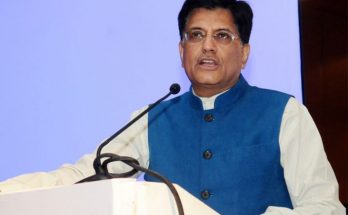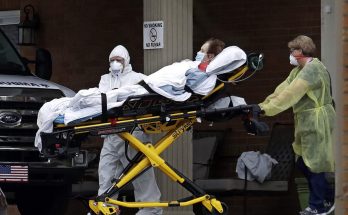The irony of it all should not be missed. It is the latest indicator of the compulsions dogging the principal opposition party in India, the Bharatiya Janata Party (BJP) in the run-up to the general as well as State Assembly elections. It is these very compulsions that forced BJP chief Rajnath Singh on March 31 to induct Gujarat Chief Minister Narendra Modi to the Party’s apex decision-making bodies but stopped short of declaring him the BJP’s prime ministerial candidate. During his earlier tenure in 2007, Singh had dropped Modi from the BJP parliamentary board.
Modi is now centrestage and significantly no one has been able to stop him from getting there. It is to his own credit that Modi has broken the chains that confined him to being a mere state satrap and ascended to becoming a claimant for the BJP’s slot of prime ministerial candidate in the 2014 general polls. Rajnath Singh has mulled over Modi’s elevation since he took over the party reins in January. It is not a choice that has come to him either spontaneously or easily. For top party veterans have been watching the rise of Modi rather warily. It is no secret that BJP veteran L.K. Advani as well as seniors like leader of the Opposition in the Lok Sabha, Sushma Swaraj, and her counterpart in the Rajya Sabha, Arun Jaitley, have shown resistance to Modi being projected at the national level.
Singh’s hands have been forced by two ground realities he is compelled to pay attention to at the moment. Keeping a steady eye on these, Singh has put aside all considerations, and in the face of unrelenting pressure from a faction of the party leadership, has decided to push a higher profile for the Gujarat Chief Minister who is now in his third innings as the chief minister of Gujarat, one of India’s sunshine states which has attracted massive foreign investment in the last decade or so. The BJP chief is fully aware of the clamour for ‘Modi for PM’ from the party cadre. Just as Singh cannot afford to turn a deaf ear to the persistent cry from his party workers and foot soldiers, he cannot turn a blind eye to the perception amongst urban middle class Indians of Modi being a strong leader with the capability to deliver good governance.
Few leaders in the BJP can deny that Modi has become the most popular saffron face within and outside the party. The BJP cadre feels that if any leader can lead the party to victory at the stumps, it is none other than the Gujarat chief minister, the man who has been feted and reviled with equal fervor. This is the profile that he has assiduously built for himself using stirring rhetoric at public meetings and artfully deploying hologram technology to appear simultaneously at election rallies. The canny politician has also a genius for number-crunching and loves unleashing formidable statistics to prove the progress in Gujarat under his rule. In a wired world in which the medium is the message, Modi has deployed an entire armoury of communication tools, including hiring international PR experts to craft a strategy to market him and working to ensure that the UK, European Union and even the US not only put an end to treating him as a pariah for his alleged role in the Gujarat riots but publicly embrace him. He has worked at building a macho image, the strong man who does not fear taking on the Gandhi family that that runs the ruling Congress like its fief. Modi has projected himself as one from amongst the class that is rustic with little taste for niceties when he takes on his opponents. He has also attempted to dilute his image of a Muslim hater by meeting leaders from the minorities and even claiming a share of the Muslim vote in Gujarat state elections.
Modi has himself raised his political stature by taking on national leaders like Congress chief Sonia Gandhi and the perceived Congress PM candidate Rahul Gandhi. He has also elevated himself to being a contender for the top post by criticising Prime Minister Manmohan Singh. Modi wants the voters to view him as an alternative to Singh. There can be no denying that his task has been made easier by the prevailing negative public perception about the prime minister being a non-performer and weak leader.
While Modi and the BJP cadre feel he is the Man of the Moment, some of his senior party colleagues have their reservations. The lack of consensus in the BJP over Modi being projected as the prime minister has come in the way of the all-important public announcement, as the party crafts its poll strategy. According to Modi detractors, he is not the right choice in a political climate that demands national parties in the country to forge alliances with regional political outfits if they want to form a government at the Centre. Modi is viewed as a divisive leader instead of one around whom a consensus can emerge when it comes to pre poll alliances or even at a later stage when allies sit to make a choice for PM. Long-term BJP ally, Bihar Chief Minister Nitish Kumar, has already voiced his anti-Modi sentiment. Some of the other components of the BJP-led National Democratic Alliance, too, have reservations about him.
In the complex poll arithmetic, the acceptance of Modi across the board is a crucial factor given that the BJP is well aware that on its own it cannot win the numbers in the general elections to cross the half-way mark in the Lok Sabha required to form its own government. The arithmetic is clearly against not only the BJP but also the other national party, the Congress. Uttar Pradesh sends the largest number of members ((80) to the Lok Sabha, followed by 48 from Maharashtra, 42 from West Bengal, 42 from Andhra Pradesh, 40 from Bihar, 39 from Tamil Nadu, 29 from Madhya Pradesh, 28 from Karnataka, 26 from Gujarat and 25 from Rajasthan. The BJP is in power only in three (Madhya Pradesh, Gujarat and Karnataka) of these 10 states. The party has dismal prospects in the coming Karnataka Assembly polls and may just lose there before the Lok Sabha polls come around. In all the big states the BJP will have to look for allies, some as temperamental as Jayalalitha in Tamil Nadu and a reluctant Mamata Banerjee in Kolkata.
Evidently, the BJP is looking at winning enough seats across the country to emerge as the single largest party and form the nucleus of a coalition that can stake its claim to rule at the Centre. For this the BJP has to look at a figure between 150-160. Can Modi swing this for the BJP? This is being furiously debated within the BJP itself. Another issue of debate within the party is the impact the Modi selection will have on the Muslim vote. A section of the BJP fears that the minority vote will polarize, with the sole intention of keeping him out and thus, defeat the party the moment Modi is named by it as the prime minister in waiting.
Modi has gained ground and Rajnath Singh has given him as much a boost he considers appropriate at this juncture. For Modi, the wait is not yet over.
(Rashmi Saksena is Consulting Editor, The Hitavada)





